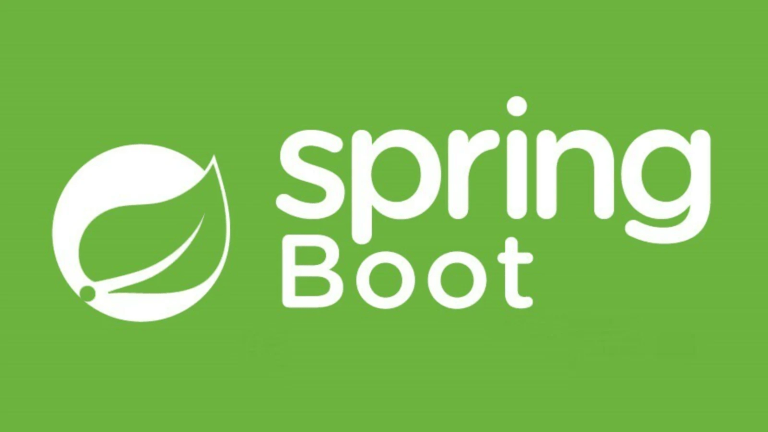Spring Data JPA Crash Course 2025 – Learn CRUD, Pagination, Relationships & Custom Queries with Spring Boot
Spring Data JPA is one of the most popular tools for simplifying database operations in Java applications. Used extensively with Spring Boot, it streamlines the process of working with relational databases, making complex persistence logic easy to implement. Whether you’re developing a small app or enterprise-level software, mastering Spring Data JPA is crucial for efficient and scalable database access.
This crash course provides a comprehensive introduction to CRUD operations, pagination, relationships, and custom queries in Spring Data JPA, complete with practical examples and code snippets. By the end of this guide, you’ll have actionable insights to start building effective Spring Boot applications with powerful database features.
Table of Contents
1. What is Spring Data JPA, and Why is It Important?
Spring Data JPA is an abstraction layer built on top of JPA (Java Persistence API) that simplifies database interactions in Java-based applications. By reducing boilerplate code, it enables developers to focus more on business logic rather than persistence implementation.
Why Developers Choose Spring Data JPA in 2025:
- Productivity Boost: With JpaRepository, you get built-in CRUD and pagination methods.
- Seamless Integration: Compatible with databases like MySQL, PostgreSQL, and Oracle.
- Scalability: Ideal for applications ranging from startups to enterprise systems.
- Powerful Query Options: Supports dynamic and custom queries, including JPQL and native SQL.
Spring Data JPA provides the foundation for building efficient, scalable applications, catering to various business domains.
2. Getting Started with Spring Data JPA
Before jumping into the details, ensure your environment is set up correctly.
Adding Dependencies
Using Maven, include the following spring-boot-starter-data-jpa dependency in your pom.xml:
<dependency>
<groupId>org.springframework.boot</groupId>
<artifactId>spring-boot-starter-data-jpa</artifactId>
</dependency>
<dependency>
<groupId>com.h2database</groupId>
<artifactId>h2</artifactId>
<scope>runtime</scope>
</dependency>Here, we use the H2 in-memory database for simplicity. You can replace it with another database like MySQL or PostgreSQL for production use.
Setting Up the Database
Configure the database connection in the application.properties file:
spring.datasource.url=jdbc:h2:mem:testdb spring.datasource.driverClassName=org.h2.Driver spring.datasource.username=sa spring.datasource.password=password spring.jpa.database-platform=org.hibernate.dialect.H2Dialect
Spring Boot will automatically create and manage the database schema for you.
3. Implementing CRUD Operations
CRUD operations (Create, Read, Update, Delete) form the foundation of any data-driven application.
Creating Entities
Define your entities using the @Entity annotation.
@Entity
public class Product {
@Id
@GeneratedValue(strategy = GenerationType.IDENTITY)
private Long id;
private String name;
private double price;
// Getters and Setters
}CRUD Repository Methods
Spring Data JPA’s JpaRepository provides out-of-the-box methods like save(), findById(), and delete().
Example Usage:
@Autowired
private ProductRepository productRepository;
// Create a product
Product product = new Product();
product.setName("Laptop");
product.setPrice(1000.00);
productRepository.save(product);
// Fetch all products
List<Product> products = productRepository.findAll();4. Pagination and Sorting
For large datasets, displaying all records at once is impractical. Pagination and sorting solve this challenge.
Using Pageable in Queries
Pageable pageable = PageRequest.of(0, 5, Sort.by("price").descending());
Page<Product> page = productRepository.findAll(pageable);
page.getContent(); // List<Product>
page.getTotalPages(); // Total number of pagesSpring Data JPA’s findAll(Pageable) method makes pagination effortless.
5. Working with Relationships
One-to-Many Relationship
Model a one-to-many relationship, where one entity is associated with multiple child entities.
Example: A category can have multiple products.
Category.java:
@Entity
public class Category {
@Id
@GeneratedValue(strategy = GenerationType.IDENTITY)
private Long id;
private String name;
@OneToMany(mappedBy = "category", cascade = CascadeType.ALL)
private List<Product> products;
}Product.java (Updated):
@ManyToOne @JoinColumn(name = "category_id") private Category category;
Spring Data JPA will automatically link these entities via foreign keys.
Many-to-Many Relationship
For scenarios like users and roles, use the @ManyToMany annotation.
@ManyToMany
@JoinTable(
name = "user_role",
joinColumns = @JoinColumn(name = "user_id"),
inverseJoinColumns = @JoinColumn(name = "role_id")
)
private Set<Role> roles;6. Writing Custom Queries
For flexible operations, you can write custom queries using JPQL or native SQL.
Using JPQL
@Query("SELECT p FROM Product p WHERE p.price > :price")
List<Product> findProductsAbovePrice(@Param("price") double price);Using Native Queries
@Query(value = "SELECT * FROM product WHERE name LIKE %?1%", nativeQuery = true) List<Product> searchByName(String name);
7. Tips for Mastering Spring Data JPA
- Understand Annotations: Focus on
@Entity,@Id,@GeneratedValue, and relationship annotations like@OneToMany. - Practice Pagination: Test with real datasets to optimize paging strategies.
- Write Efficient Queries: Use JPQL sparingly to reduce performance bottlenecks.
- Learn Query Optimization: Analyze execution plans to improve query performance.
- Experiment with Relationships: Create small projects to explore one-to-one, one-to-many, and other relationships.
8. FAQs About Spring Data JPA
1. Can I use Spring Data JPA with NoSQL databases?
Spring has Spring Data MongoDB and other modules for NoSQL, but Spring Data JPA is specific to relational databases.
2. Are these features production-ready?
Yes, Spring Data JPA is used in enterprise-level applications and supports robust use cases.
3. How does Spring Data JPA handle transactions?
It uses Spring’s transaction management, which is declarative and supports annotations like @Transactional.
Spring Data JPA empowers developers to handle databases without much hassle. By mastering the features outlined in this guide, you can significantly enhance your productivity and build reliable, scalable applications with confidence. Start implementing your own CRUD operations, relationships, and queries today!


